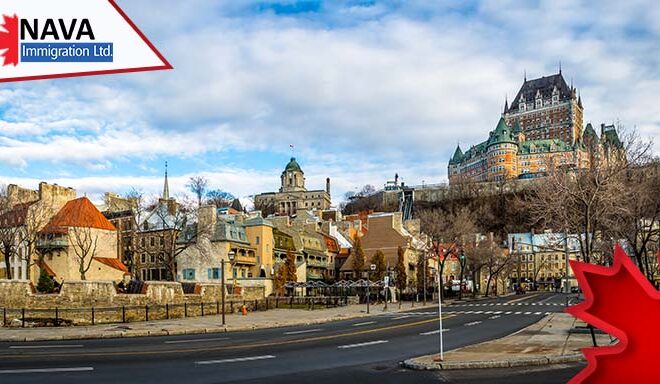BC’s Labour Market Outlook Report:1 M Jobs Expected in 10 Years
British Columbia recently issued its Labour Market Outlook report, which predicts that by 2033, there will be approximately 1 Million jobs in the provincial workforce. Read on to get insights into BC’s Labour Market Outlook Report.
BC’s Labour Market Outlook Report
The Labour Market Outlook report outlines the 10-year anticipation of the province’s skills training and education, in-demand careers, and sectors that might be recruiting over the years.
According to the report, around 65% of the new job opportunities in British Columbia would be to replace retiring workers. BC expects that by 2030, over nine million Canadians will be retired.
The remaining 35% of employment in BC, around 345,000 job opportunities, will contribute to expanding the regional workforce. The government of British Columbia anticipates a yearly average job expansion of 1.2%. This implies that BC’s provincial workforce will have grown to 3.1 million individuals by 2033.
According to the report, provinces’ newcomers will account for 46% of new job searchers by then. This is a 25% increase compared to the Labour Market Outlook report issued five years before.
According to the prediction of the BC’s government, over the next ten years, around 470,000 new foreign workers will come to the province. This projection includes both permanent and temporary residents who are expected to enter BC’s workforce.
According to the province, due to higher-than-anticipated immigration targets and a rise in labour force participation among specific age groups, the number of individuals seeking jobs will align closely with the number of new job openings in the province.
The report claims that about 75% of predicted job opportunities will necessitate some post-secondary education or training.
Professions and Education/Training
Along with BC’s Labour Market Outlook Report, the provincial government has released an occupation list that is going to have the most opportunities for individuals who intend to join BC’s labour force. The list is categorized according to the level of education required for each occupation:
High school and/or occupation-specific training:
- letter carriers
- messengers and couriers
- mail and parcel sorters, and similar occupations
College diploma or apprenticeship:
- Social and community service workers
- Early childhood educators and assistants
- Police officers, excluding commissioned
Degree:
- Registered psychiatric nurses and registered nurses
- Teachers of kindergarten and elementary school
- Designers and software engineers
British Columbia is trying to increase access to training in various fields. The goal is to ensure that residents have the necessary skills and training they would require to succeed in one of the above-stated in-demand fields or professions.
As per the government, the province is already taking measures for various new programs, which are stated below:
- BC is financing 602 new nursing seats at various colleges and universities within the province. This adds up to the already existing around 2000 nursing seats in the province;
- At Simon Fraser University, it is establishing a new medical school. Additionally, the University of British Columbia’s Faculty of Medicine is adding up to 112 new residency seats;
- It is generating over 1,700 additional seats for early childhood educators (ECE) and, since 2018, offering 6,500 scholarships to ECE students;
- Since 2027, it has increased about 6,000 new tech-relevant openings and
- The province is granting $271.3 million to establish a new Centre for Automotive Innovation and Clean Energy at Vancouver Community College. The training center will be able to accommodate up to 1,400 students yearly with new programs in various areas. This includes clean-energy technology, light rail, and zero-emissions vehicle repair and technology.
British Columbia Provincial Nominee Program (BCPNP).
BC sends ITAs to candidates to apply for provincial nomination weekly (with some exceptions) to assist the province in expanding its workforce.
BC issues ITAs via its PNP program, the British Columbia Provincial Nominee Program (BCPNP). Through its PNP, the province selects economic immigration candidates they believe can easily integrate into the regional economy. This is possible because the provincial and federal governments share the immigration responsibility.
BC’s Labour Market Outlook Report assists the province in determining the attributes to emphasize when issuing invitations to apply through the BC PNP.
For instance, BC holds a draw for candidates almost every other week targeting tech occupations. Additionally, it also sent ITAs for Early Childhood Educators and Assistants as well as for healthcare workers in every draw this year. Recently, BC has also started inviting candidates skilled in construction occupations.
British Columbia’s Immigration streams
Under the BC PNP, there are various programs that candidates can utilize to get an invitation through BC’s provincial nomination program.
Note that getting a provincial nomination differs from receiving a permanent resident status from the Canadian immigration department. However, having a nomination still strengthens the application.
There are various pathways to obtain a provincial nomination in British Columbia. These include International Graduates, Entry-Level, Skilled Workers, and Semi-Skilled streams.
In addition, there are additional streams in BC, such as streams for Express Entry candidates, entrepreneurial streams, and a tech stream. Notably, there is a unique eligibility requirement for each program.





